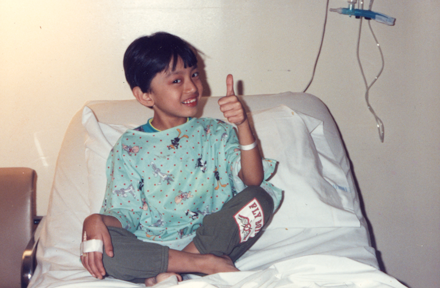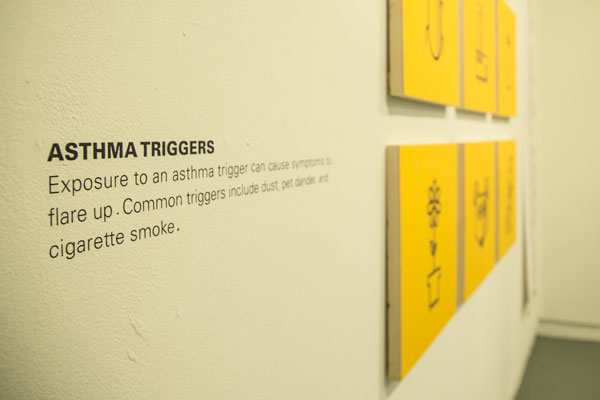Some of the earliest memories of my older brother were of him in a hospital bed hooked up to a nebulizer, an apparatus that delivers a mist of asthma medication to a patient as they breathe. Asthma runs in my family. My brother was constantly in and out of the hospital for severe asthma attacks and in 1997 my grandfather died due to complications related to asthma. As a child, my parents were very strict about not having pets and making sure that no one in the household smoked cigarettes. My brother stayed indoors and played video games instead to avoid the many asthma triggers outside. I was taught at a very young age about what to do when I saw my brother start to have difficulty breathing. My mom showed me how to measure out medication into my brother’s home nebulizer and how to help him during an attack. I did not envy my brother’s condition; his life seemed so limited. Our baby sitter would have to constantly remind him to slow down during pick-up football games and all of his friends knew to take it easy on him when they were playing outdoors.
When I was in the 1st grade, I was diagnosed with asthma after an unexpected asthma attack. My parents, having seen the symptoms in my brother, knew exactly what to do and rushed me to the emergency room. I have no memories of the asthma attack. After that attack, my daily routine became similar to that of my brother’s. Before recess, we would have to go to the nurse’s office to do our peak flows and take our daily medication. A peak flow measures a patient’s lung capacity and is a good indicator of asthma symptoms. Each student had their own mouthpiece with their name written on it. The nurse would always remind me not to take my brother’s mouthpiece, the only other one with Sayo on it. After my diagnosis, my brother helped me set up my peak flow journal and instructed me to carefully plot my peak flow results. He knew that my penmanship wasn’t the best.
I have been fortunate enough to have amazing access to quality health care so the impact of asthma on my life has been minimal. During a routine lunch trip to Northeast Market, a woman working at a booth for a health fair stopped me and asked if I had asthma. Our conversation left me wondering about what I could do as a designer to contribute to the asthma management space. I stayed in touch with the woman, who worked for the Greater Baltimore Asthma Association, an organization of health care providers, community health workers and public policy experts working around the issue of asthma in Baltimore.



